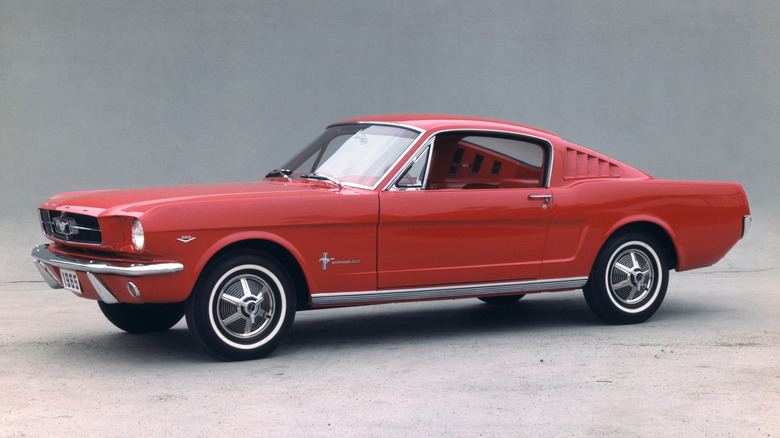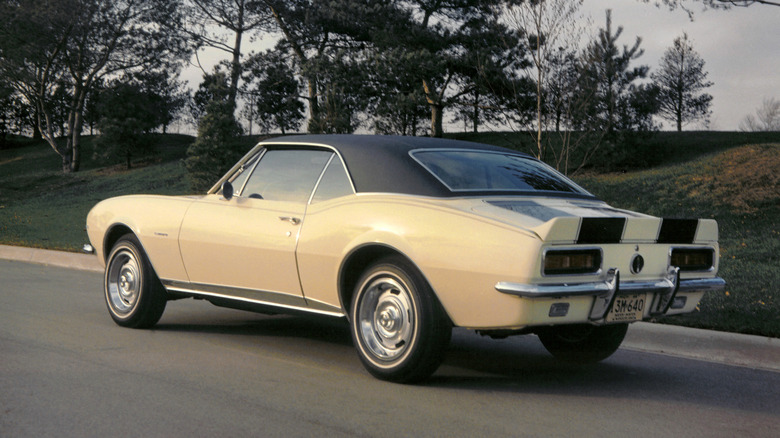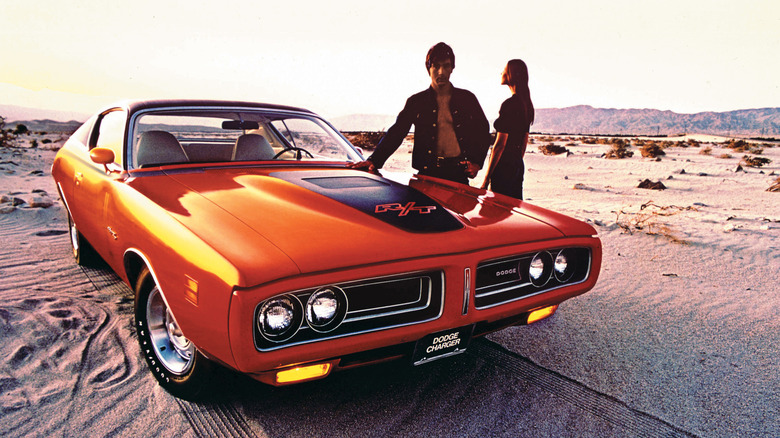What Makes Classic Cars So Expensive To Buy And Maintain?
The appeal of owning and driving a classic car is pretty hard to ignore. Who wouldn't want one of the best-looking muscle cars ever designed sitting in their driveway? And there are several decades of amazing automotive design that have come and gone, leaving iconic cars from a number of different eras. These automotive dreams aren't cheap, though. There are plenty of expensive muscle cars, and even more modern vehicles from the 1990s are starting to become prohibitively expensive. Just spend a bit of time scrolling through auction sites like Bring A Trailer or Cars and Bids, and you'll spot plenty of expensive rides. But why are classic cars so pricey?
Logically, cars generally lose value over time, so older ones should be less expensive, right? Unfortunately, the limited numbers of certain cars produced, the reduced reliability over time, and the availability of parts for simple maintenance can all drive up the price of classic car ownership.
Throughout my life, I've owned several classic cars — some that were produced over 50 years ago, others slightly younger. I grew up in a household where there was always a classic car being bought, sold, or restored in some form, and I've spent countless hours scouring the internet for deals on classic cars (and motorcycles). I've also spent many hours repairing those vehicles and searching for the right parts in the process. These are lessons I've learned first or second hand over many years.
Supply and demand
Purchasing classic cars is expensive because demand often outweighs supply. If something has gone out of production, and a limited number of vehicles exist, the price will stabilize and eventually go up — especially if the vehicle is desirable or popular. When a car is rare (limited production) it typically means the car ends up maintaining quite a bit of volume.
The biggest problem I've found when maintaining classic cars is parts availability. When a car is old, and especially when it's no longer in production, car companies stop producing the replacement parts. So, while you might be in need of something like a distributor, spark plugs, an electrical component, or even something as simple as brake pads – they could be out of production. In those cases, you may need to buy a part that's made for a different vehicle and fits yours, or search out aftermarket companies that make something similar.
It's worth mentioning that not every classic car is expensive. There are lots of options amongst classic cars that are relatively cheap and easy to maintain. Having some mechanical knowledge and tools, or a mechanic that you know and trust, will go a long way — but modern cars aren't the only choice for a modern lifestyle. Lots of buyers are treating classic cars as investments these days as well. Keeping mileage low and parking the car in a climate-controlled garage is certainly an option, but it reduces the usefulness of your purchase significantly.
Costs you might not think of
The raw rumble of big V8 muscle cars from the '60s and '70s, the quirky nature and Radwood-popularized style of nostalgic '80s and '90s automobiles, and even the ultra-classic nature of cars from before World War II –- all of it has a certain appeal. There's a lot to choose from if you want a classic ride, even if it's just used for weekend transportation. But the cost of driving an old car isn't just in the purchase or the parts, it costs a bit more to run some classic cars too. Those old V8s that are so evocative? They've generally got terrible fuel economy.
Some classic cars require specialized tires, which makes keeping them on the road slightly more difficult – if not just more expensive. Keeping old paint in good shape can be tough, too — with the protection of things like wax or paint protection film being required to keep your investment in good shape. Then, there's insurance. Classic car insurance can often be less expensive than insuring a brand-new car, but depending on the age and value of your car, insurance premiums can be high. Insurance companies base their rates on the cost to repair a car and if your car has specialized body panels, hard-to-find replacement parts, or unique components, it might be more expensive to insure than a modern hum-drum SUV that costs the same amount of money.


